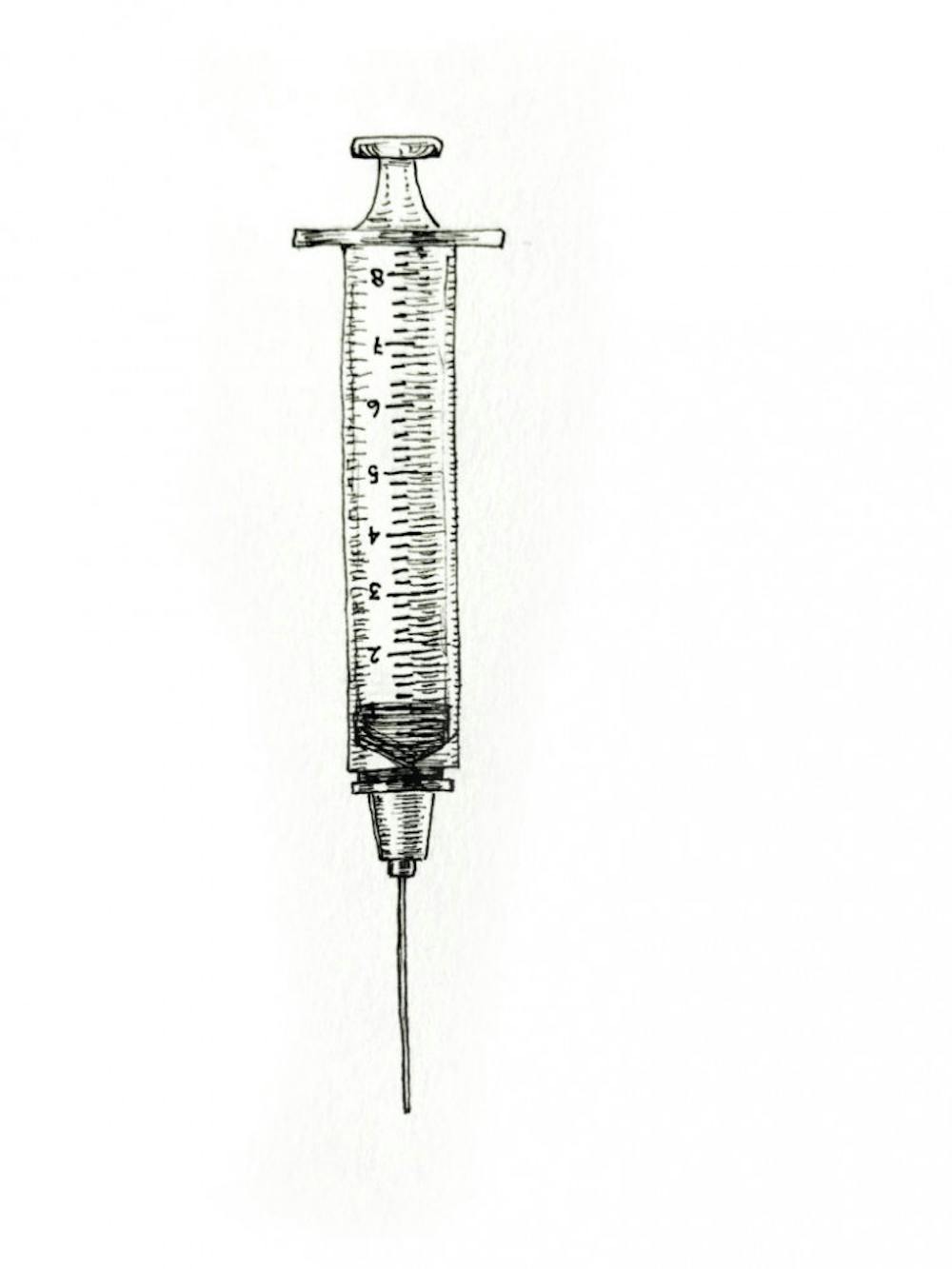To better understand and analyze how Hepatitis C spreads in communities through injection drug use, University researchers compared the spread to a similar means of disease transmission mosquitoes.
Hepatitis C is a viral infection that can spread through contact with contaminated blood, a spread occurring with increasing frequency among communities where injection drug use is common. According to the Centers for Disease Control and Prevention, the estimated number of cases of acute Hepatitis C reached close to 44,300 in 2017.
This project created a mathematical model that documents the spread of Hepatitis C in injection drug-using communities by treating it as a vector-borne disease, or a disease that uses an environmental intermediary like a mosquito to transmit infectious pathogens into an organism.
The research was led by senior author of the study and Assistant Professor of Ecology and Evolutionary Biology Brandon C. Ogbunu. The team also included University researchers Miles Miller-Dickinson and Victor Meszaros and Professor Salvador Almagro-Moreno of the University of Central Florida.
The model is an ordinary differential equation, which uses the averages of populations in its calculations. It allows for the calculation of how many people will be infected at the outbreak of the disease and is more simple and tractable than its predecessors. The model also allows researchers to examine how reducing the number of needles in a community affects the spread of Hepatitis C.
Ogbunu has long held an interest in vector-borne diseases and the role of environmental intermediaries in disease transmission, as shown in his previous research regarding the spread of cholera through drinking water.
Research focusing on the spread of disease may offer influential insights into the issue of disease prevention, particularly within drug-using communities.
The implications of this model are crucial in Hepatitis C prevention efforts. “One of the things that our model suggests is that the key to decreasing the rate of infection in a population is really about changing the ratio of uninfected to infected needles,” Ogbunu said. The greater number of uninfected needles relative to infected needles, the less likely it is that Hepatitis C can spread through the community. At face value, actively decreasing the number of any needles used for injection drugs in a population might help stop the spread of disease. But this approach fails to consider the detrimental outcomes which may arise from offsetting the ratio of needles, Ogbunu said.
The researchers acknowledged the stigma surrounding drug use and the barrier it places between people and necessary help. The idea that people who are using drugs may need aid from the community could be conceived by some as a radical notion, Ogbunu said.
Additionally, the prevalence of Hepatitis C in rural areas that have limited access to safe injection sites and limited needles in circulation is much greater. The dissemination of knowledge about safe drug use and more specialized efforts in rural areas will prove to be necessary steps to further prevent the spread of disease, Ogbunu said.
Future work aims to account for variations within communities to create more accurate results. When using an ODE, “everyone’s kind of clumped in the same population, and you kind of have to average over a number,” Miller-Dickinson said. “In reality, different folks will have different sharing networks.” By modeling the spread of disease in specific communities, the researchers anticipate that upcoming work can fill in any gaps that might be missed in the model.
Ogbunu hopes that his model can be used as a “framework for thinking about the public health problem,” and one that will create more conscious efforts to limit the spread of disease in injection drug-using populations.

Jack Walker served as senior editor of multimedia, social media and post- magazine for The Herald’s 132nd Editorial Board. Jack is an archaeology and literary arts concentrator from Thurmont, Maryland who previously covered the Grad School and staff and student labor beats.





